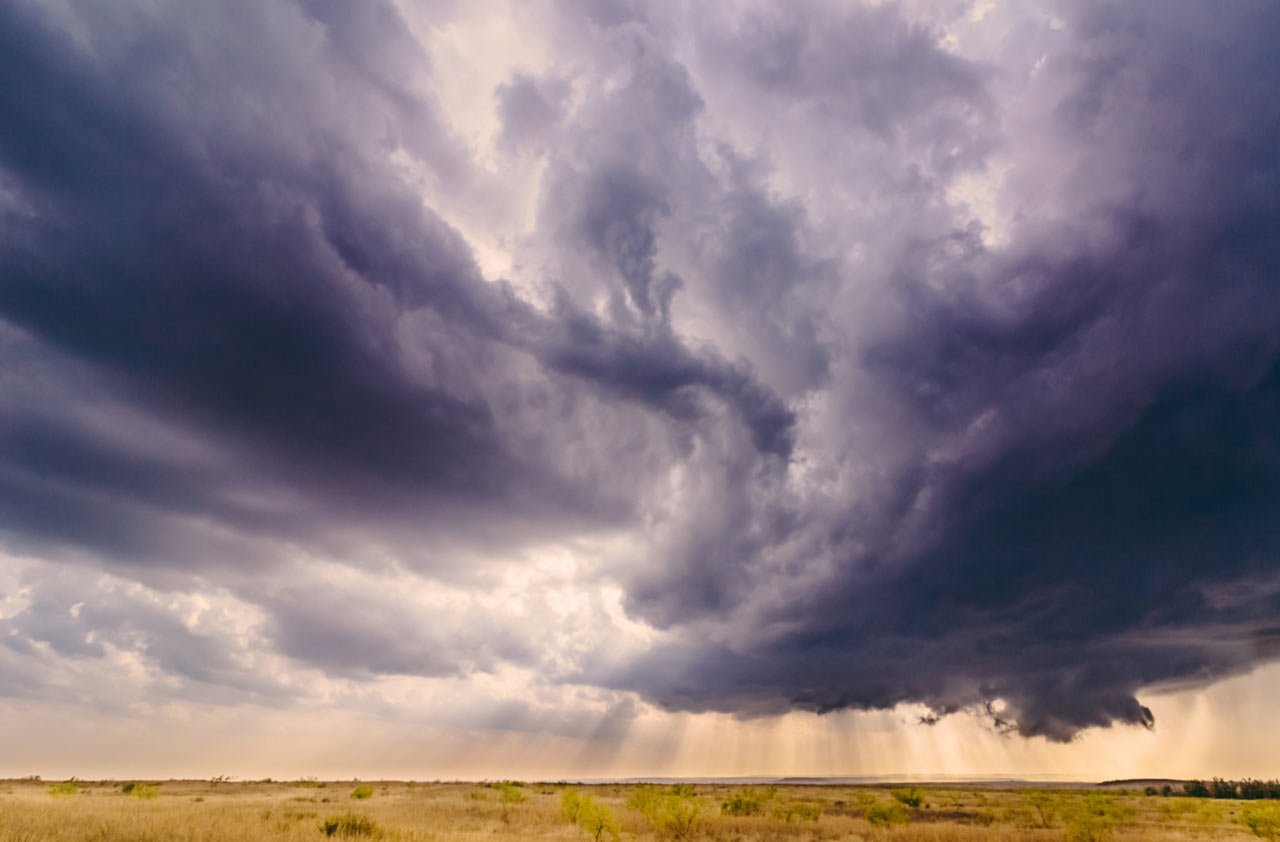Stock Market Storm Trackers Have Their Eyes on the Skies
The conditions are looking increasingly favorable for a hurricane of a stock market correction to form. Luckily, like with most hurricanes, investors have time to prepare.


Plotting the course of the stock market can help us mitigate risk, much like plotting a hurricane’s trajectory.
Tornadoes are smaller than hurricanes. They strike hard and largely unexpectedly. Hurricanes are so large that they can be seen from space. They move slowly and can be tracked. You want to avoid both, of course, because of their capacity for destruction.
The stock market is much more like a hurricane than a tornado in that it’s generally, though not completely, predictable. This relative predictability allows us to plot the course of the stock market and often steer clear of its worst damage before disaster strikes.
From just $107.88 $24.99 for Kiplinger Personal Finance
Become a smarter, better informed investor. Subscribe from just $107.88 $24.99, plus get up to 4 Special Issues

Sign up for Kiplinger’s Free Newsletters
Profit and prosper with the best of expert advice on investing, taxes, retirement, personal finance and more - straight to your e-mail.
Profit and prosper with the best of expert advice - straight to your e-mail.
Tracking key stock market indicators helps us assess the chance of a correction, and perhaps a Category 5 crash. Here are three conditions stock market storm trackers are currently keeping an eye on.
1. We’re nine years into a bull market. Are we due for a correction?
Like hurricanes, stock market corrections — defined as a fall of 10% or more from recent highs — are inevitable. Each of these potential disasters also becomes more likely when certain conditions are right. In the case of stock market corrections, one of these conditions is a long-term bull market.
The good news is that our current bull market has lasted nine years. Much like a hurricane, however, we can’t prevent corrections from happening. While they’ve been infrequent since the Great Recession, they’re a consistent part of stock ownership.
We experience a recession on average every eight years, and we are nine years removed from the last one. So, yes, while the hurricane flags aren’t flying yet, the chances of a correction would appear to be on the rise.
2. Does the current P/E ratio indicate a pending correction?
A price-to-earnings (P/E) ratio tells you how much a stock sells for relative to the company’s earnings. The entire stock market or individual indexes can be measured with a P/E ratio to determine when stocks may be overvalued. If the ratio is too high, it could be a signal that we’re paying too much for stocks and the market is due for a correction or crash.
The Shiller P/E ratio, also known as the CAPE (Cyclically Adjusted Price to Earnings) ratio, is a specific measure developed by Nobel Prize-winning economist Robert Shiller that “tries to work around the shortcomings of the current P/E ratio — either inappropriate earnings or over or undervaluation — by averaging results over a longer time frame.”
The Shiller P/E ratio on July 16, 2018, was 33.3, which is almost double the historical average of 16.9 and marked its highest point to date since the dot-com bubble burst in 2000. This could mean stocks are overvalued and we’re due for a storm. The ratio peaked at 44.19 on Nov. 30, 1999. And you know what happened when that tech bubble burst.
“There is no clear message from all of this. Long-term investors shouldn’t be alarmed and shouldn’t avoid stocks altogether,” Shiller wrote in The New York Times last year. “But my bottom line is that the high pricing of the market — and the public perception that the market is indeed highly priced — are the most important factors for the current market outlook. And those factors are negative.”
While there are some factors that cloud the usefulness of the Shiller P/E ratio — such as companies retaining cash and not paying dividends, which could artificially lower the P/E because when a company doesn’t pay dividends, it would have higher profits — and Shiller himself says “long-term investors shouldn’t be alarmed,” a retired investor who depends on income should take note and diversify investments to weather any pending storm.
3. The 10-year Treasury interest rate is at about 3%. What could this mean for risk?
Meteorologists tracking hurricanes start to pay closer attention to potential strikes on Southern coastal states when storms reach a latitude along the lines of Puerto Rico. Similarly, investment experts look at a map of Treasury interest rates.
The yield spread of rates indicates the likelihood of a recession or recovery one year forward. The spread is the difference between the short-term borrowing rates set by the Federal Reserve and the interest rates on 10-year Treasury notes. Spreads that are near zero or in negative territory tend to be associated with recessions.
This spread continues to dip. It’s a trend that started in 2014. In 2014, the spread was 2.93%, and on Aug. 10, 2018, it was as low as 0.82%. Most experts agree it may suggest an economic slowdown. If the trend continues, the yield spread would reach near zero by mid-2019. That could be predictive of a recession in 2020.
The last time this happened was in 2006, when a negative spread predicted a 40% chance of a recession in the coming year. We formally entered the recession in December 2007. Historically, each time since 1960 that the yield spread entered negative territory, the country experienced a recession about one year later.
Charting the storm and mitigating risk
Now is the time to determine your potential exposure should a market correction occur.
It’s possible to look at stock market activity and chart its progress much the same way that meteorologists chart the progress of hurricanes. They make no guarantees, but with each major storm, they gain more insights and increase predictive accuracy.
Like meteorologists, we can’t accurately pinpoint when the next major correction will hit the stock market — and there are too many interconnected elements to predict exactly how much damage may occur — but there are signs of disturbances that may grow into economic storms.
Investment advisory services offered only by duly registered individuals through AE Wealth Management, LLC (AEWM). AEWM and Stuart Estate Planning Wealth Advisors are not affiliated companies. Stuart Estate Planning Wealth Advisors is an independent financial services firm that creates retirement strategies using a variety of investment and insurance products. Neither the firm nor its representatives may give tax or legal advice. Investing involves risk, including the potential loss of principal. No investment strategy can guarantee a profit or protect against loss in periods of declining values. Any references to protection benefits or lifetime income generally refer to fixed insurance products, never securities or investment products. Insurance and annuity product guarantees are backed by the financial strength and claims-paying ability of the issuing insurance company. 561082
The appearances in Kiplinger were obtained through a PR program. The columnist received assistance from a public relations firm in preparing this piece for submission to Kiplinger.com. Kiplinger was not compensated in any way.
Profit and prosper with the best of Kiplinger's advice on investing, taxes, retirement, personal finance and much more. Delivered daily. Enter your email in the box and click Sign Me Up.

Craig Kirsner, MBA, is a nationally recognized author, speaker and retirement planner, whom you may have seen on Kiplinger, Fidelity.com, Nasdaq.com, AT&T, Yahoo Finance, MSN Money, CBS, ABC, NBC, FOX, and many other places. He is an Investment Adviser Representative who has passed the Series 63 and 65 securities exams and has been a licensed insurance agent for 25 years.
-
 States That Tax Social Security Benefits in 2026
States That Tax Social Security Benefits in 2026Retirement Tax Not all retirees who live in states that tax Social Security benefits have to pay state income taxes. Will your benefits be taxed?
-
 QUIZ: What Type Of Retirement Spender Are You?
QUIZ: What Type Of Retirement Spender Are You?Quiz What is your retirement spending style? Find out with this quick quiz.
-
 How to Avoid the Financial Quicksand of Early Retirement Losses
How to Avoid the Financial Quicksand of Early Retirement LossesSequence of returns — experiencing losses early on — can quickly deplete your savings, highlighting the need for strategies that prioritize income stability.
-
 This Is How Early Retirement Losses Can Dump You Into Financial Quicksand (Plus, Tips to Stay on Solid Ground)
This Is How Early Retirement Losses Can Dump You Into Financial Quicksand (Plus, Tips to Stay on Solid Ground)Sequence of returns — experiencing losses early on — can quickly deplete your savings, highlighting the need for strategies that prioritize income stability.
-
 How an Elder Law Attorney Can Help Protect Your Aging Parents From Financial Mistakes
How an Elder Law Attorney Can Help Protect Your Aging Parents From Financial MistakesIf you are worried about older family members or friends whose financial judgment is raising red flags, help is out there — from an elder law attorney.
-
 Q4 2025 Post-Mortem From an Investment Adviser: A Year of Resilience as Gold Shines and the U.S. Dollar Dives
Q4 2025 Post-Mortem From an Investment Adviser: A Year of Resilience as Gold Shines and the U.S. Dollar DivesFinancial pro Prem Patel shares his take on how markets performed in the fourth quarter of 2025, with an eye toward what investors should keep in mind for 2026.
-
 Is Your Emergency Fund Running Low? Here's How to Bulk It Back Up
Is Your Emergency Fund Running Low? Here's How to Bulk It Back UpIf you're struggling right now, you're not alone. Here's how you can identify financial issues, implement a budget and prioritize rebuilding your emergency fund.
-
 An Expert Guide to How All-Assets Planning Offers a Better Retirement
An Expert Guide to How All-Assets Planning Offers a Better RetirementAn "all-asset" strategy would integrate housing wealth and annuities with traditional investments to generate more income and liquid savings for retirees.
-
 7 Tax Blunders to Avoid in Your First Year of Retirement, From a Seasoned Financial Planner
7 Tax Blunders to Avoid in Your First Year of Retirement, From a Seasoned Financial PlannerA business-as-usual approach to taxes in the first year of retirement can lead to silly trip-ups that erode your nest egg. Here are seven common goofs to avoid.
-
 How to Plan for Social Security in 2026's Changing Landscape, From a Financial Professional
How to Plan for Social Security in 2026's Changing Landscape, From a Financial ProfessionalNot understanding how the upcoming changes in 2026 might affect you could put your financial security in retirement at risk. This is what you need to know.
-
 6 Overlooked Areas That Can Make or Break Your Retirement, From a Retirement Adviser
6 Overlooked Areas That Can Make or Break Your Retirement, From a Retirement AdviserIf you're heading into retirement with scattered and uncertain plans, distilling them into these six areas can ensure you thrive in later life.